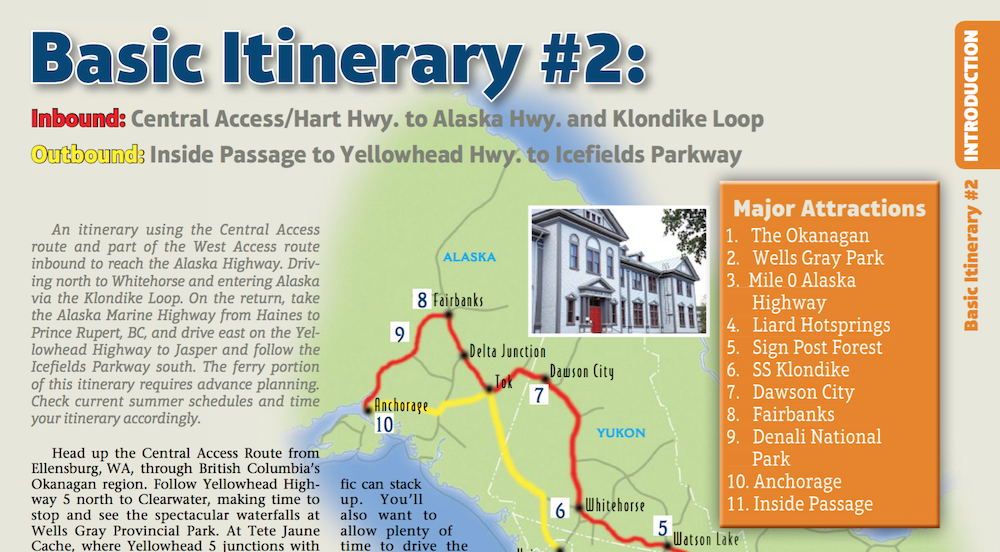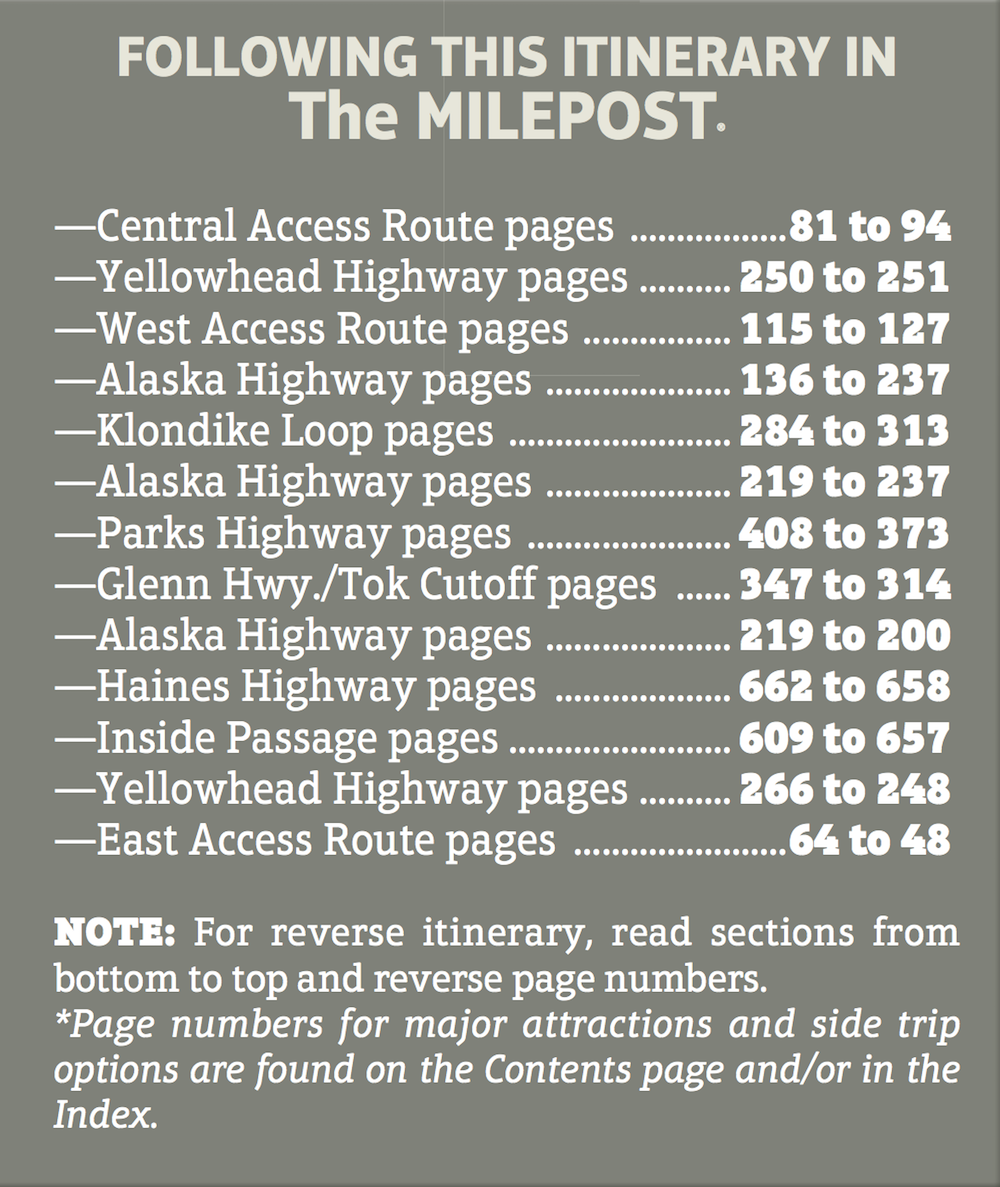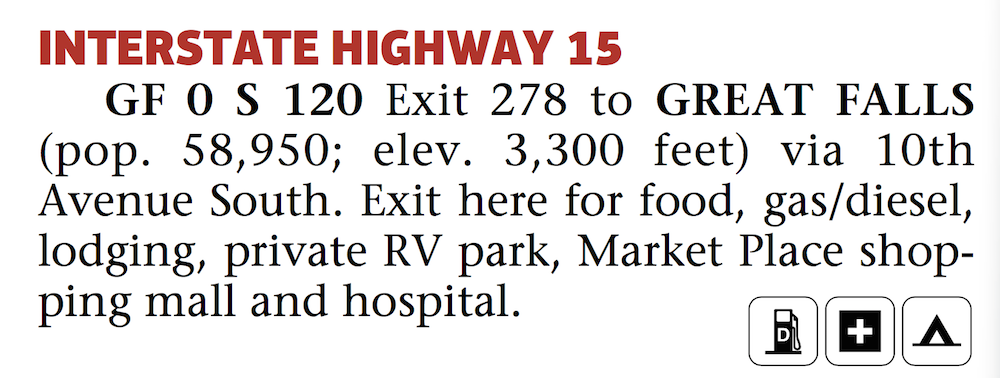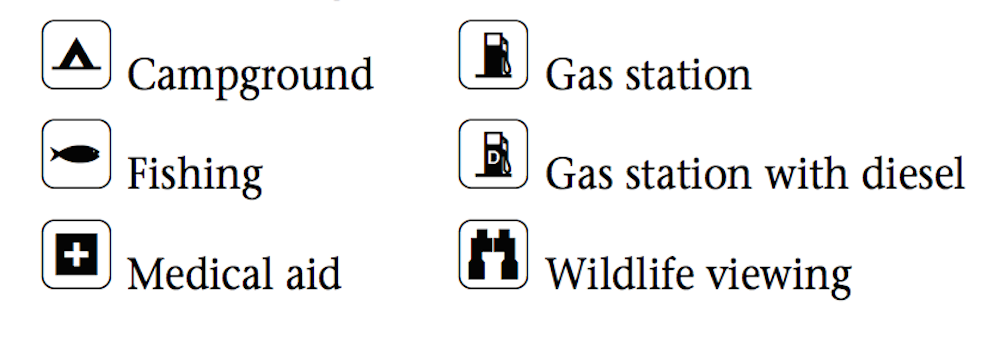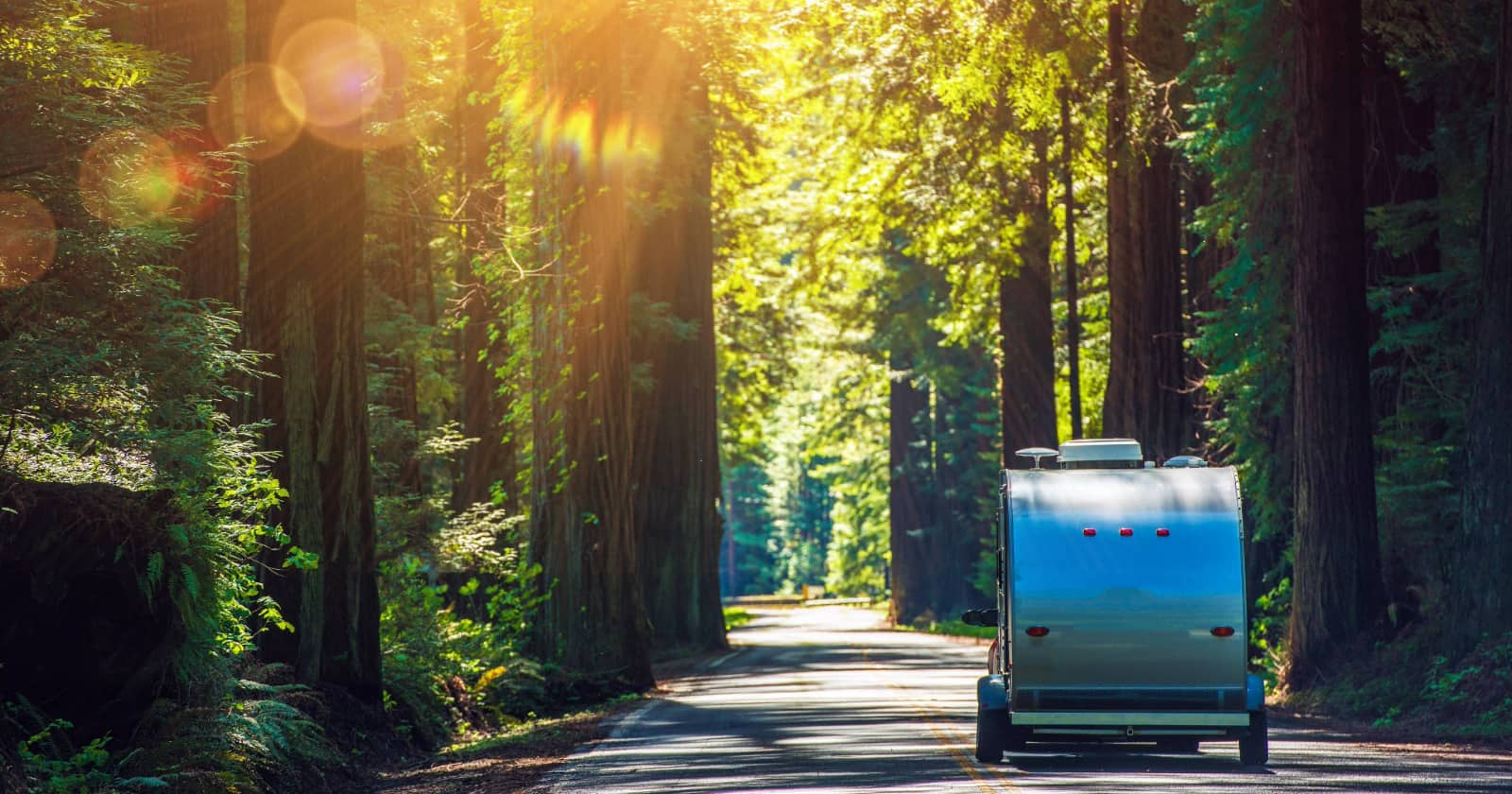You’re headed to Alaska in your RV and have so many questions that you don’t know where to begin. Despite all of your online research, you are swimming in miscellaneous facts that seem exceedingly disjointed. Your best attempts to put them together in some sort of recognizable order have left you feeling overwhelmed.
You are not the first person to find yourself in this dilemma, and there is a solution. If you haven’t heard of a publication called The Milepost, then you have missed one of the best resources for traveling to Alaska. The publication is so-named because it walks you through several routes to Alaska via Western Canada mile by mile(post). The latest version for 2017 is available on Amazon here.
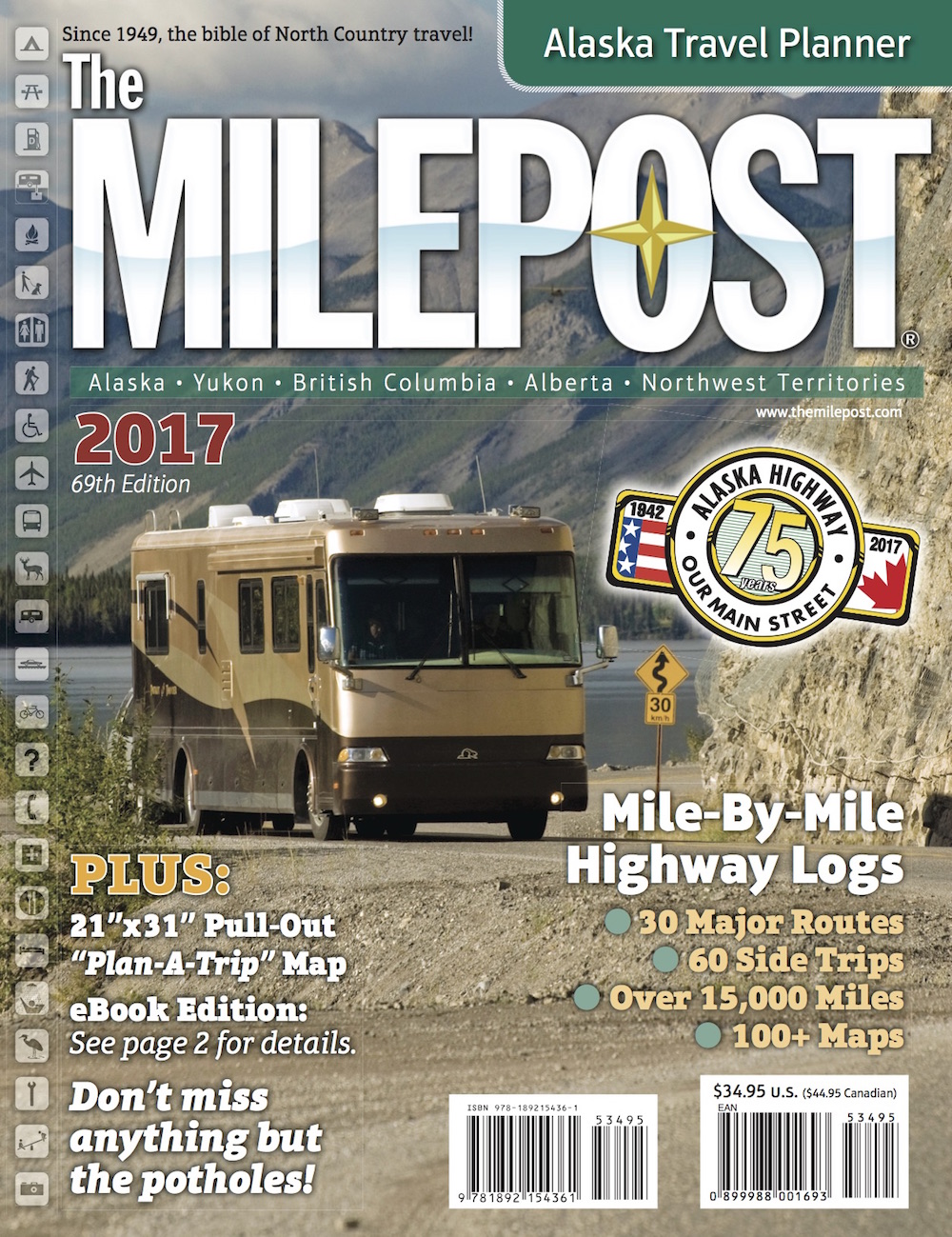
The Milepost is unique in that it does not just give you directions, but it also tells you where you can find turnouts, cautions you about steep grades, and lets you know where to be extra alert because wildlife might be found on the road. As strange as that last bit may sound, they are right more often than not.
The Milepost format
It takes a bit of practice to master using The Milepost. They have managed to fit an astounding amount of information into its 500+ pages, and to do that they had to get creative on how to organize it effectively.
The format somewhat resembles a Choose Your Own Adventure book (how apropos), in which you reach the bottom of the page and must make a decision. “If you choose to pick up the sword and fight, turn to page 45. If you decide to climb out the window instead, turn to page 83.”
Such a format can be disorienting at first since we are accustomed to reading front to back in an order pre-determined by the author. In the case of The Milepost, it is a rather ingenious method for organizing data to fit just about any route to Alaska and back no matter how many random detours you make.
An introduction to The Milepost
Scan the first part of the publication and locate the section near the beginning that shows “Basic Itineraries.”
Each suggested itinerary has two different colored routes: red for inbound to Alaska and yellow for outbound. For the sake of simplicity, pick a red inbound route. It doesn’t matter if it is the one you intend to take on your trip. This is just for practice.
Take out the pull-out Plan-A-Trip map, then locate the starting point on The Milepost suggested inbound itinerary and on the map. The Milepost has great regional maps but you will want to use them in combination with the pull-out map. This will help you better orient yourself, especially if you aren’t familiar with town names.
Note that on each suggested itinerary page there is a text box that shows a list of the names of highways and their respective page numbers.
These are listed in the order you would travel them, either top to bottom for inbound or bottom to top for outbound. Look at the top entry in the list and go to the page referenced. Here you will find a brief introduction to the starting city and a couple of maps.
You might be wondering about the use of highway names instead of numbers. In this part of North America, highways are referred to by name, not by number. The Milepost conforms to this custom and they are written on the Plan-A-Trip pull-out map. You may wish to highlight these for easy reference.
Understanding the Route Log
Next up is the nuts and bolts, also known as the Route Log. You will see a title such as “East Access Route Log.”
A bit further down you’ll see many short text entries that each begin with something that looks like: “GF 0 S 120.”
The entries after that look slightly different, like: “GF 24.5 S 95.5.”
An explanation of the abbreviations used is at the beginning of each section. In these examples, the abbreviations used are “GF” for Great Falls, MT and “S” for Sweetgrass, MT. In our first example, GF 0 means you are 0 miles from Great Falls, and S 120 means you are 120 miles from Sweetgrass.
As you read down through the entries, you will notice that the number next to GF increases as the number next to S decreases. In the second example, you have traveled 24.5 miles from Great Falls and you are 95.5 miles from reaching Sweetgrass.
When you are in Canada, the notation will also indicate kilometers and would look like GF 24 (38.6 km) S 95.5 (153.7 km). Once you reach the end of a section, the numbers will be the opposite of the first entry: GF 120 S 0.
At the end of each section you will be given route choices, such as: “Northbound travelers turn to page 64, or to take the Scenic Drive, go straight through this intersection 4.3 miles to Highway 3,” etc.
Additionally, when there is a junction with another highway mid-route, there will be a text box that says, “Junction,” and will tell you what page to turn to if you wish to vary your route at that point.
The important details
In addition to telling you where moose may be standing on the highway at dawn and dusk, The Milepost also gives steep grade information, known construction sites, railroad crossings, number of lanes on road, next fuel stop, rough road cautions, and so forth. These entries are all in red.
Scattered throughout the Route Log are also a bunch of symbols that show you where gas, diesel, camping, dining, wildlife viewing, and medical aid can be found.
The Milepost is hands down the best resource for RVers planning on making an Alaska pilgrimage, and is worth every penny and then some. Taking a bit of time to learn how to use it effectively will ensure a much more relaxed and pleasant journey.

